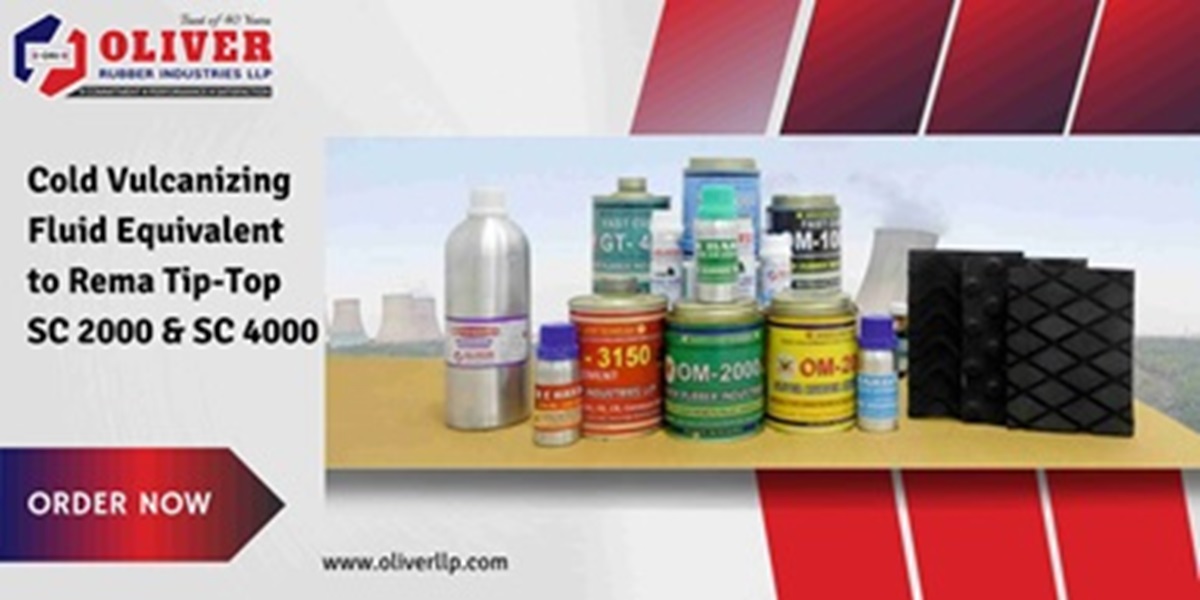
In conveyor belt systems, the importance of pulley lagging is often underestimated. Yet, it plays a critical role in enhancing performance, reducing maintenance downtime, and increasing the lifespan of both the conveyor belt and pulleys. By providing a friction surface between the pulley and the conveyor belt, pulley lagging minimizes belt slippage and improves traction, especially in high-tension or wet environments.
Pulley lagging is the layer of material applied to the shell of conveyor pulleys. Its purpose is to increase friction with the conveyor belt, reduce belt wear, and extend the service life of pulleys by protecting them from material buildup, abrasion, and corrosion. Among the various types of lagging materials, Rubber Pulley Lagging Sheet stands out for its durability, resilience, and cost-effectiveness.
At Oliver Rubber LLP, we specialize in manufacturing high-quality Rubber Pulley Lagging Sheets, including the highly sought-after diamond pulley lagging, which is preferred across industries for its superior performance.
Let’s explore the major types of pulley lagging used in industrial conveyor systems.
Diamond pulley lagging is one of the most common and effective types used in conveyor systems. It features a diamond-shaped groove pattern on the surface, which significantly enhances the grip between the pulley and the conveyor belt. This pattern allows for effective water dispersion and debris removal, making it ideal for wet or slippery environments.
The diamond grooves also help in reducing belt slippage, a common problem in high-tension applications. With its excellent traction and self-cleaning properties, diamond pulley lagging ensures smooth and uninterrupted material flow.
Oliver Rubber LLP is a leading manufacturer of diamond pulley lagging in India. Our Rubber Pulley Lagging Sheets are designed to deliver maximum grip and durability. Made from premium rubber compounds, they offer outstanding resistance to abrasion, slippage, and environmental wear.
Plain rubber lagging is a traditional type with a smooth surface. Though it provides less grip compared to diamond or ceramic lagging, it is still widely used in light-duty applications where slippage is minimal.
Plain Rubber Pulley Lagging Sheets are economical and easy to install. They are most suitable for dry environments and low-tension systems where material load is relatively stable. These sheets still provide good protection to pulleys against wear and corrosion, making them a practical choice for basic conveyor operations.
Ceramic lagging is a high-performance solution for the most demanding applications. It incorporates ceramic tiles embedded in a rubber matrix. These tiles create a high-friction surface that provides superior grip, even under the most challenging conditions, such as extreme wetness, mud, or high tension.
Ceramic pulley lagging is ideal for heavy industries like mining, quarrying, and bulk material handling. The tiles are highly wear-resistant and offer excellent longevity, which reduces the frequency of pulley maintenance and replacement.
Although more expensive than other types, ceramic lagging provides the best return on investment in high-impact environments due to its outstanding performance and durability.
***** lagging consists of narrow rubber strips that are bonded to the pulley surface. It offers a customizable and flexible lagging solution. While it doesn’t provide the same grip levels as diamond or ceramic lagging, ***** lagging is easy to apply and maintain.
This type is best suited for pulleys with smaller diameters or for applications requiring quick lagging replacements without removing the pulley from the system.
Pulley lagging can be installed using two primary methods: cold bonding and hot vulcanization.
Cold bonded pulley lagging involves using adhesives to bond the Rubber Pulley Lagging Sheet to the pulley. It is faster, more cost-effective, and ideal for on-site repairs.
Hot vulcanized lagging is done using heat and pressure, resulting in a stronger, more durable bond. This method is typically used in new installations or when maximum reliability is required.
Oliver Rubber LLP provides both cold bonding adhesives and high-quality lagging sheets suitable for various bonding methods.
When selecting the type of pulley lagging, it’s essential to consider the following factors:
Application environment (wet, dry, dusty)
Tension and load requirements
Type of material being conveyed
Maintenance budget and downtime limitations
For example, diamond pulley lagging is a top choice for general-purpose applications due to its balance of grip and wear resistance. On the other hand, ceramic lagging may be better for heavy-duty, high-abrasion operations.
At Oliver Rubber LLP, we manufacture and supply a wide range of Rubber Pulley Lagging Sheets tailored to different industrial needs. Our diamond pulley lagging is crafted with precision, using top-grade rubber compounds that ensure superior grip, long service life, and reduced maintenance.
We serve a wide array of industries including mining, cement, power plants, and bulk material handling. With a strong commitment to quality and customer satisfaction, Oliver Rubber LLP continues to set the benchmark in the Indian market for premium pulley lagging products.
Pulley lagging is more than just a protective layer—it’s a crucial element that ensures the efficient and safe operation of your conveyor system. Whether you need basic protection with plain rubber lagging or maximum performance with diamond or ceramic lagging, choosing the right type can make all the difference.
Trust Oliver Rubber LLP to deliver durable, high-quality Rubber Pulley Lagging Sheets that meet the demands of your operations. Our products are engineered to perform, built to last, and trusted across India for their reliability and excellence.
| Categories: | Services / Other Services |
| Phone: | 9414129472 |
| Address: | 4F-15, "Oliver House", New Power House Road, Jodhpur-342001, Rajasthan, India |
| Email: | oliverrubberindia@gmail.com |